
The Potential of Japan's Offshore Wind Power is Enormous
Japan has the world's sixth largest exclusive economic zone (EEZ) and territorial waters. The wind conditions required for electricity generation from offshore wind power are also abundant The International Energy Agency (IEA) estimates that there is abundant power generation potential that can cover nine times the current electricity consumption of Japan 1. There is a certainty that energy that has been relied on imports from overseas can be covered by domestic offshore wind power generation.
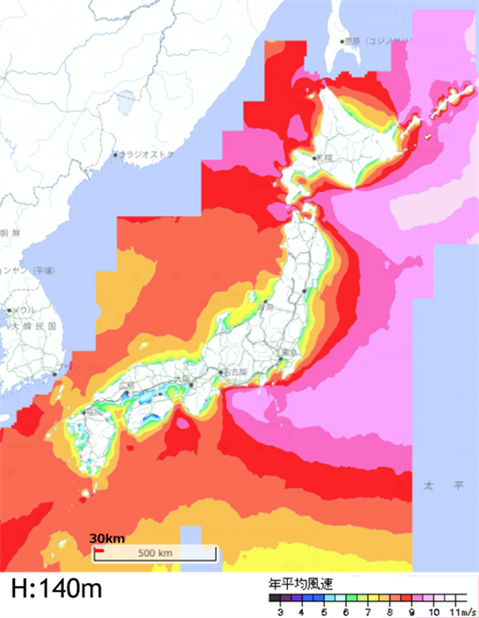
Source: NeoWins
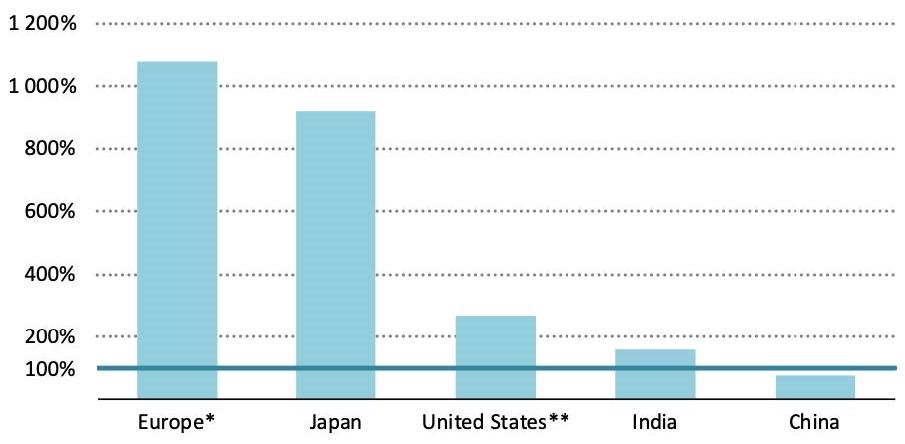
Sorce: IEA “Offshore Wind Outlook 2019”(2019) Figure 26
* Potential excluding Greenland and overseas territories. ** Potential available excluding Alaska and Hawaii.
Floating Offshore Wind that can be Installed Even in the Deep Sea
Most of the offshore wind turbines to date have been bottom-fixed offshore wind turbines that are installed in shallow seas with a depth of 50 meters or less. It is said that the depth of water in Japan gets deeper as soon as it goes offshore. However, around the world, the development and installation of floating offshore wind turbines that can be installed even in the deep sea are progressing rapidly. Such "floating offshore wind power generation" can be installed in sea areas with a depth of about 200 meters. Currently, commercial development plans of floating offshore wind are underway mainly in Europe and the United States. Japan is also considering setting a new target for floating offshore wind power.

Source: Source by Renewable Energy Institute based on Ministry of Land, Infrastructure, Transport and Tourism
Offshore Wind Power Generation Has Gained Cost Competitiveness
In Europe, which leads offshore wind power generation, the cost of offshore wind power has already been cut in half over the last ten years, making it more competitive than conventional power generation. In Japan, too, in the “Offshore Wind Industry Vision (1st Phase)2 ” compiled by the government and industry, it is targeted offshore wind power as the main power source. Also, it is targeting the goal to achieve a cost reduction of bottom-fixed offshore wind from 8 to 9 yen/kWh by 2030 to 2035, which is the same level as in Europe today.
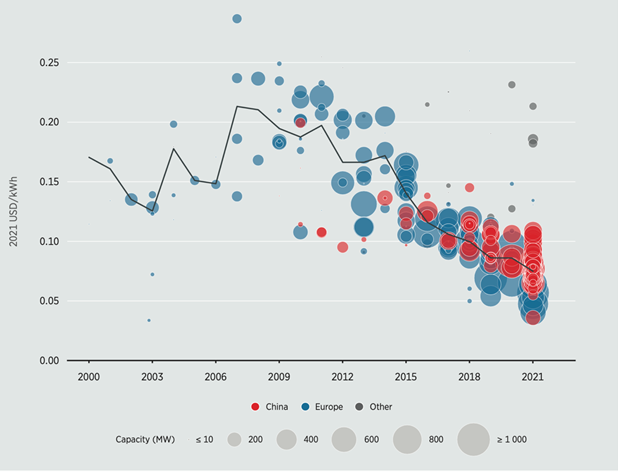
Source: IRENA “Renewable Power Generation Costs in 2021”(2022)Figure 4.13
The Economic Effect of Offshore Wind Power is Large
Offshore wind power generation consists of approximately 20,000 parts. In addition, many economic effects and employment creation effects can be seen, such as the construction of offshore wind farms, power transmission line construction, and power plant operation and maintenance. The "Offshore Wind Industry Vision (Phase 1)" aims for 60% of domestic procurement rate in Japan by 2040.
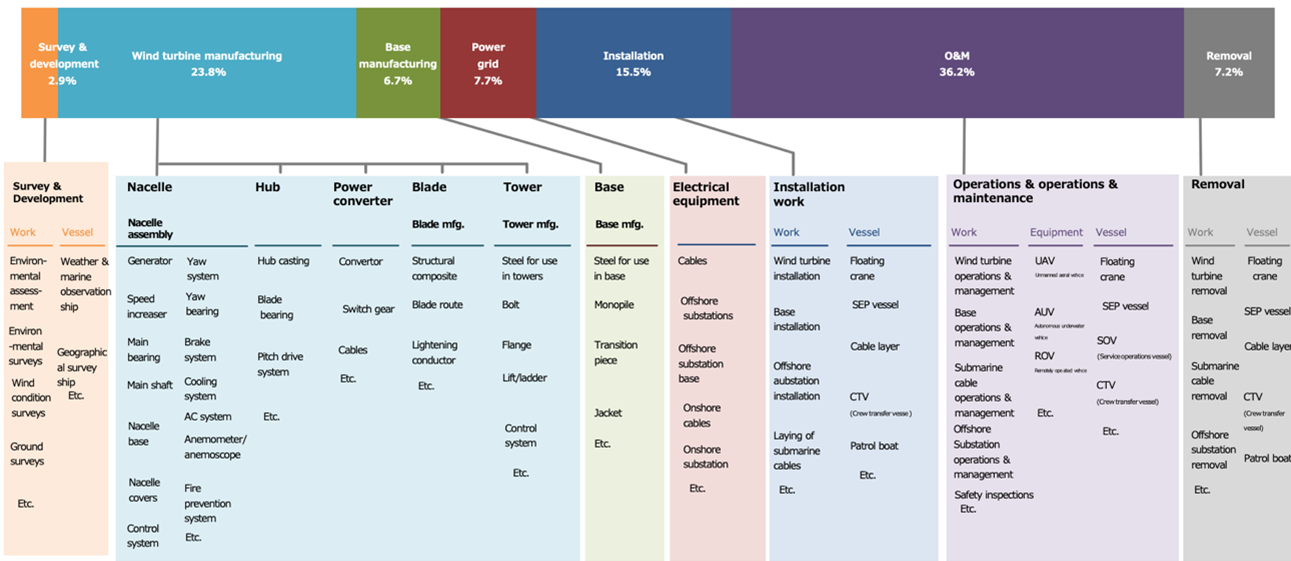
Source: Public-Private Council on Enhancement of Industrial Competitiveness for Offshore Wind
Power Generation, First meeting, Material 3, Pg.17
The World is Already Moving Towards Offshore Wind Power Deployment
The global installed capacity of offshore wind power has expanded during the last decade from 3.8 GW in 2011 to 63.2 GW in 2022. Currently, the introduction is progressing mainly in Europe and China, but various countries such as the United States, Australia, South Korea, and Vietnam are working to expand after having launched policies one after another. In response to the recent energy crisis, among the newly renewable energy targets set by governments, offshore wind power is expected to expand further. Considering these targets, the world is expected to expand to 371 GW by 2031 3. Japan is also aiming to form projects of 10 GW in 2030, and a maximum of 45 GW in 2040. However, since the world continues to expand at an even faster rate, Japan needs to set even more ambitious targets.
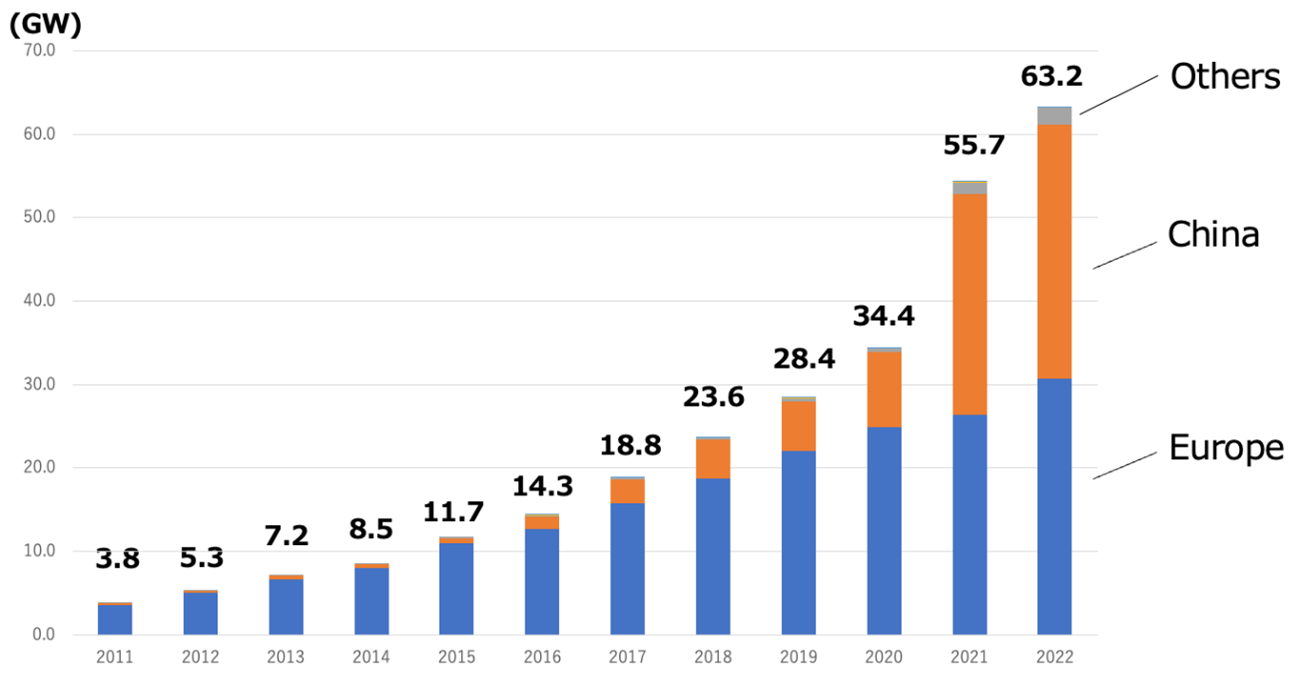
Source: Source by Renewable Energy Institute based on IRENA “Renewable Energy Capacity Statistics 2022”(2022)
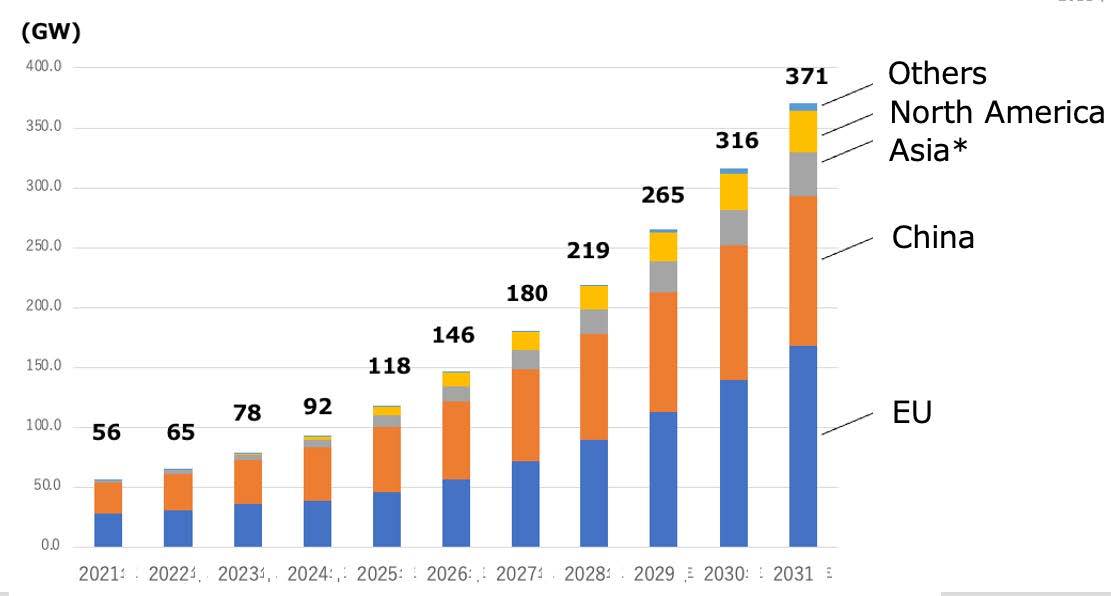
Source: Source by Renewable Energy Institute based on GWEC “Global Offshore Wind Report 2022” (2022)
*Asia except China
Offshore Wind Power Generation Coexisting with Fisheries
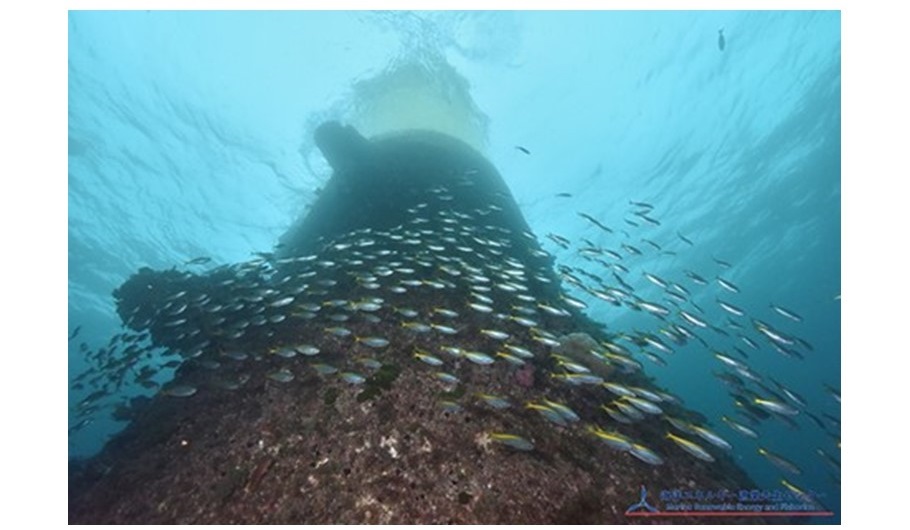
Source:Marine Renewable Energy and Fisherie
Surrounded by beautiful and rich seas, Japan has one of the world's most prosperous fisheries industries. We enjoy the bounty of the sea in various ways. In recent years, however, Japan's fisheries have been severely affected by changes in the marine environment caused by climate change and other factors. Offshore wind power, which is attracting attention as a measure against climate change, is also expected to have the effect of boosting local economy.
The introduction of offshore wind power has only just begun in Japan. However, at the floating offshore wind power generation in Goto City, Nagasaki Prefecture4. as an example, it has been confirmed that offshore wind power has a fish reef effect and many fish have settled around the wind turbine. By referring to these positive examples, we may be able to search for a form of symbiosis that transforms anxiety into hope and contributes to the community.
- 1Offshore Wind Outlook 2019, IEA (2019)
- 2Offshore Wind Industry Vision (1st Phase)(2020)
- 3Source by Renewable Energy Institute based on GWEC “Global Offshore Wind Report 2023” (2023)
- 4Marine Diving Web、「渋谷正信氏に聞く 脱炭素時代のダイバーの役割 第3回:日本の洋上風力発電~長崎県」






